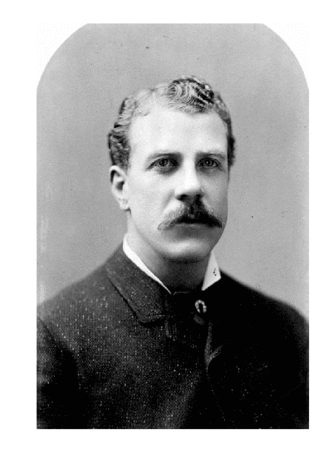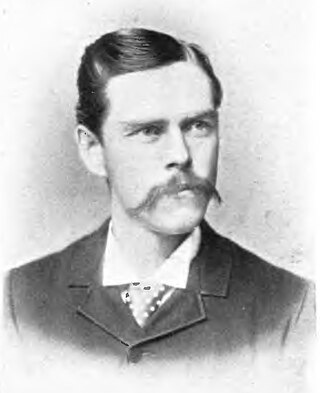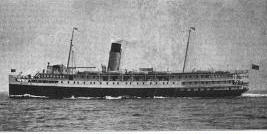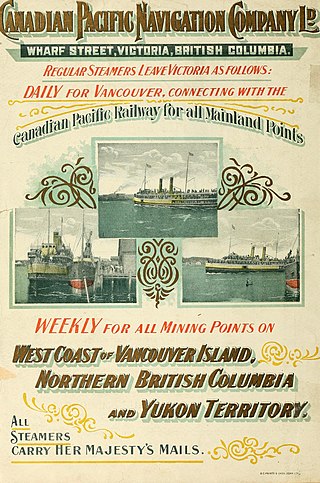
The Canadian Pacific Railway, also known simply as CPR or Canadian Pacific and formerly as CP Rail (1968–1996), is a Canadian Class I railway incorporated in 1881. The railway is owned by Canadian Pacific Kansas City Limited, known until 2023 as Canadian Pacific Railway Limited, which began operations as legal owner in a corporate restructuring in 2001.

CP Ships was a large Canadian shipping company established in the 19th century. From the late 1880s until after World War II, the company was Canada's largest operator of Atlantic and Pacific steamships. Many immigrants travelled on CP ships from Europe to Canada. In 1914 the sinking of the Canadian Pacific steamship RMS Empress of Ireland just before World War I became largest maritime disaster in Canadian history. The company provided Canadian Merchant Navy vessels in World Wars I and II. Twelve vessels were lost due to enemy action in World War II, including the RMS Empress of Britain, which was the largest ship ever sunk by a German U-boat.

RMS Empress of Japan, also known as the "Queen of the Pacific", was an ocean liner built in 1890–1891 by Naval Construction & Armaments Co, Barrow-in-Furness, England for Canadian Pacific Steamships (CP). This ship – the first of two CP vessels to be named Empress of Japan – regularly traversed the trans-Pacific route between the west coast of Canada and the Far East until 1922. During the First World War she served as armed merchant cruiser, becoming HMS Empress of Japan for the period that she was a commissioned ship of the Royal Navy.

John Irving was a steamship captain in British Columbia, Canada. He began on the Fraser River at the age of 18 and would become one of the most famous and prosperous riverboat captains of the era. His father, William Irving, was known as the "King of the River" and the neighborhood of Irvington in Portland, Oregon, is named in honor of their family.

James William Troup was an American steamship captain, Canadian Pacific Railway administrator and shipping pioneer.

SS Princess Helene was a passenger and cargo ferry operated by the Canadian Pacific Railway (CPR).

MV Princess of Vancouver was a passenger vessel in the Pacific coastal service fleet of the Canadian Pacific Railway (CPR).

SS Princess Alice was a passenger vessel in the coastal service fleet of the Canadian Pacific Railway (CPR) during the first half of the 20th century.

The Canadian Pacific River Lake and River Service, also known as the British Columbia Lake and River Service, was a division of Canadian Pacific Railway (CPR) which began operating passenger and cargo shipping routes along British Columbia's inland waters during the late 19th century.

The Canadian Pacific Railway Upper Lake Service, also known as the Canadian Pacific Railway Upper Lake Steamships, was a division of Canadian Pacific Railway (CPR), which began operating passenger and cargo shipping routes in the Great Lakes during the late 19th century.

SS Princess Adelaide was a passenger vessel in the coastal service fleet of the Canadian Pacific Railway (CPR) during the first half of the 20th century.

SS Princess Mary was a passenger vessel in the coastal service fleet of the Canadian Pacific Railway (CPR) during the first half of the 20th century.

The Canadian Pacific Navigation Company was an early steamship company that operated steamships on the coast of British Columbia and the Inside Passage of southeast Alaska. The company was founded in 1883 by John Irving (1854–1936), a prominent steamboat man, businessman, and politician of early British Columbia. In 1901, the company was purchased by the Canadian Pacific Railway, becoming the steamship division of the CPR.

Princess Beatrice was a steamship built for and owned by the marine division of the Canadian Pacific Railway (CPR). The ship served from 1903 to 1928 in the coastal waters of British Columbia. The ship also operated on Puget Sound on a route from Victoria, British Columbia to Seattle, Washington. Princess Beatrice was the first ship to operate in the year-round steamship service between Seattle and Victoria that was run by CPR from 1904 to 1959. This ship should not be confused with an earlier Princess Beatrice, built in Scotland in 1874, which served on the Atlantic coast of Canada.

Princess Royal was a wooden steamship built in 1907 for the Canadian Pacific Railway Coast Service. The ship operated on the coasts of British Columbia, south east Alaska, and northern Puget Sound until 1933, when the ship was sold for scrapping.

Princess May was a steamship built in 1888 which was operated under a number of different names and owners. The ship is best known for having been involved in a grounding in 1910 which left the ship jutting completely out of the water, which became the subject of a famous shipwreck photograph.

Princess Louise was a sidewheel steamboat built in 1869. From 1869 to 1879 this ship was named Olympia. In 1879 the name was changed to Princess Louise, after Princess Louise, Duchess of Argyll, a daughter of Queen Victoria who was married to Marquess of Lorne (1845–1914), Governor General of Canada from 1878 to 1883. Princess Louise was the last sidewheeler to be operated commercially on the coast of British Columbia.

Princess Marguerite, Princess Marguerite II, and Princess Marguerite III was a series of Canadian coastal passenger vessels that operated along the west coast of British Columbia and into Puget Sound in Washington state almost continuously from 1925 to 1999. Known locally as "the Maggie", they saw the longest service of any vessel that carried passengers and freight between Victoria, Vancouver, and Seattle. The vessels were owned and operated by a series of companies, primarily Canadian Pacific Railway Company (CPSS) and British Columbia Steamships Corporation. The first two were part of the CPR "Princess fleet," which was composed of ships having names which began with the title "Princess". These were named after Marguerite Kathleen Shaughnessy, who was not a princess but was the daughter of Baron Thomas Shaughnessy, then chairman of the board of CPSS's parent, the Canadian Pacific Railway (CPR).
The SS Princess Louise was a 331-foot steamship, named in honor of Louise, Princess Royal and Duchess of Fife, Queen Victoria's granddaughter. The ship was part of the Canadian Pacific Railway's "Princess" fleet, the coastal counterparts to CPR's "Empress" fleet of passenger liners which sailed on trans-Pacific and trans-Atlantic routes. The ships of the British Columbia Coast Steamships came to be called "pocket liners" because they offered on smaller vessels the superior class of service, splendid amenities and luxurious decor equal to great ocean liners.


















